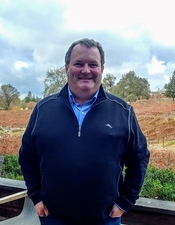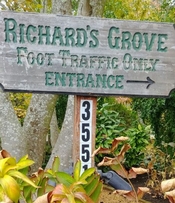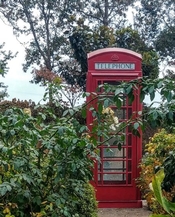 celebrate the anniversary.
celebrate the anniversary.
The twisting history of La Crema began with Rod Berglund, who called the winery La Crema VIñera, meaning, the best of the vine. He and a group of investor friends opened a winery in Petaluma in 1979. Berglund’s wine knowledge was self-taught, gained from his insatiable curiosity. It was Joseph Swan who encouraged him to become a winemaker because of his observations about a wine in a blind tasting. He began working for Swan, who gained insights about making Pinot Noir in California from friend and mentor André Tchelistcheff. Called the “Dean” or “Father” of modern California winemaking, or simply “The Maestro,” Tchelistcheff came to the Napa Valley in 1938 to work for Beaulieu Vineyards. He was making Pinots from the Carneros area as early as the 1940s, and considered the 1946 vintage the best he ever made.
Considering Berglund’s background, it is not surprising that his winemaking approach was to make wines in a restrained or, dare we say, Burgundian style. In the 1970s, with a few notable exceptions, California Pinots were overripe, extracted, high in alcohol, intense wines that often seemed more like Cabernet Sauvignon than red Burgundy.
His wines were well received. In a March 1983 Washington Post article about little known California wineries, Robert M. Parker, Jr. noted that La Crema Viñera, “specializes quite successfully in Pinot Noir and Chardonnay. Its wines are expensive ($14 to $16) and are identified by specific vineyards. Its Chardonnays, especially the 1981s, are wonderfully rich, lush and flavorful. The 1981 Pinot Noirs are also quite impressive and made in an elegant style that may not approach the tremendous success of the Pinot Noirs of Acacia but are nevertheless interesting examples of this fickle grape variety.”
Good reviews were rewarding, but marketing conditions were not. In 1984, the winery was sold. Berglund married Swan’s daughter, Lynn, in 1986, and helped Swan with his last harvest in 1987. Joseph Swan died in early 1989, and Lynn and Rod Burglund continue to operate the winery.
The group that acquired La Crema Viñera renamed the wines La Crema, moved the production facility, abandoned the vineyard designation program as well as the wine making approach, and over five years greatly increased production. An unequal relationship between supply and demand depleted the group’s finances, so in 1993, Jess Jackson stepped in to restore the original La Crema philosophy.
Jackson Family Wines found the perfect home for La Crema at Saralee’s Vineyard, a beautiful, enchanting 260-acre property in the Russian River Valley American Viticultural Area within Sonoma County, California. They purchased the property in 2016 and spent three years meticulously converting a family residence into a visitor center. It is a gorgeous, multi-level facility that includes a variety of public and private tasting areas.
Saralee’s Vineyard was created by Sonoma natives Richard and Saralee McClelland Kunde. Saralee came from a family of cattle ranchers and Richard’s family were grape growers and vintners. When they bought the property in 1988, it was variously described as a sileage field and a poison-oak infested stand of oaks, suggesting that they had a lot of work to do. It included  a hops barn dating from the 1900s. They converted the barn into their family home, and established 68 acres of vineyards, planting several different grape varieties that they sold to local wineries.
a hops barn dating from the 1900s. They converted the barn into their family home, and established 68 acres of vineyards, planting several different grape varieties that they sold to local wineries.
In addition to vineyards, they converted five acres into a meadow, which they named Richard’s Grove, and where they have hosted hundreds of community events. When I visited, all was quiet, but it was easy to see that such a large lawn surrounded by trees could welcome a large crowd. There are whimsical, artistic touches like an old truck precariously perched at the edge of a stream…and approaching calamity. Two railroad cars are strategically  positioned to serve as service areas and public restrooms. A red London telephone booth sits among the shrubbery.
positioned to serve as service areas and public restrooms. A red London telephone booth sits among the shrubbery.
They were a power couple, though from what I have learned about them, I’m not sure they would have accepted that title. They gave much of their time and energy in making their community a better place and evidence of their dedication can be found in places like Saralee’s & Richard’s Barn, a Permanent Agricultural Education Center on the grounds of the Sonoma County Fair.
Among many honors, Saralee was inducted into the Sonoma County Farm Bureau’s Hall of Fame. The annual award recognizes agricultural leaders and pioneer ranchers who have been the guiding force in preserving, protecting and propelling Sonoma County’s $3 billion farming industry.
Richard Kunde received a 2008 Award of Distinction from UC Davis, College of Agricultural and Environmental Sciences for his work in helping develop the U.S. American appellation system. When so honored, it was noted that, “As an industry leader, he was the first to promote the European notion of appellations of origin for vineyards and worked with the federal government to formalize the United States’ first viticultural appellation area—the North Coast—and created regulations for establishing future viticultural areas.”
The spirit of La Crema’s new home, imbued with the love and care of the Kunde family, seems a fortunate and fitting place. Combined with the savvy and resources of the Jackson family, the future is looking very good.
